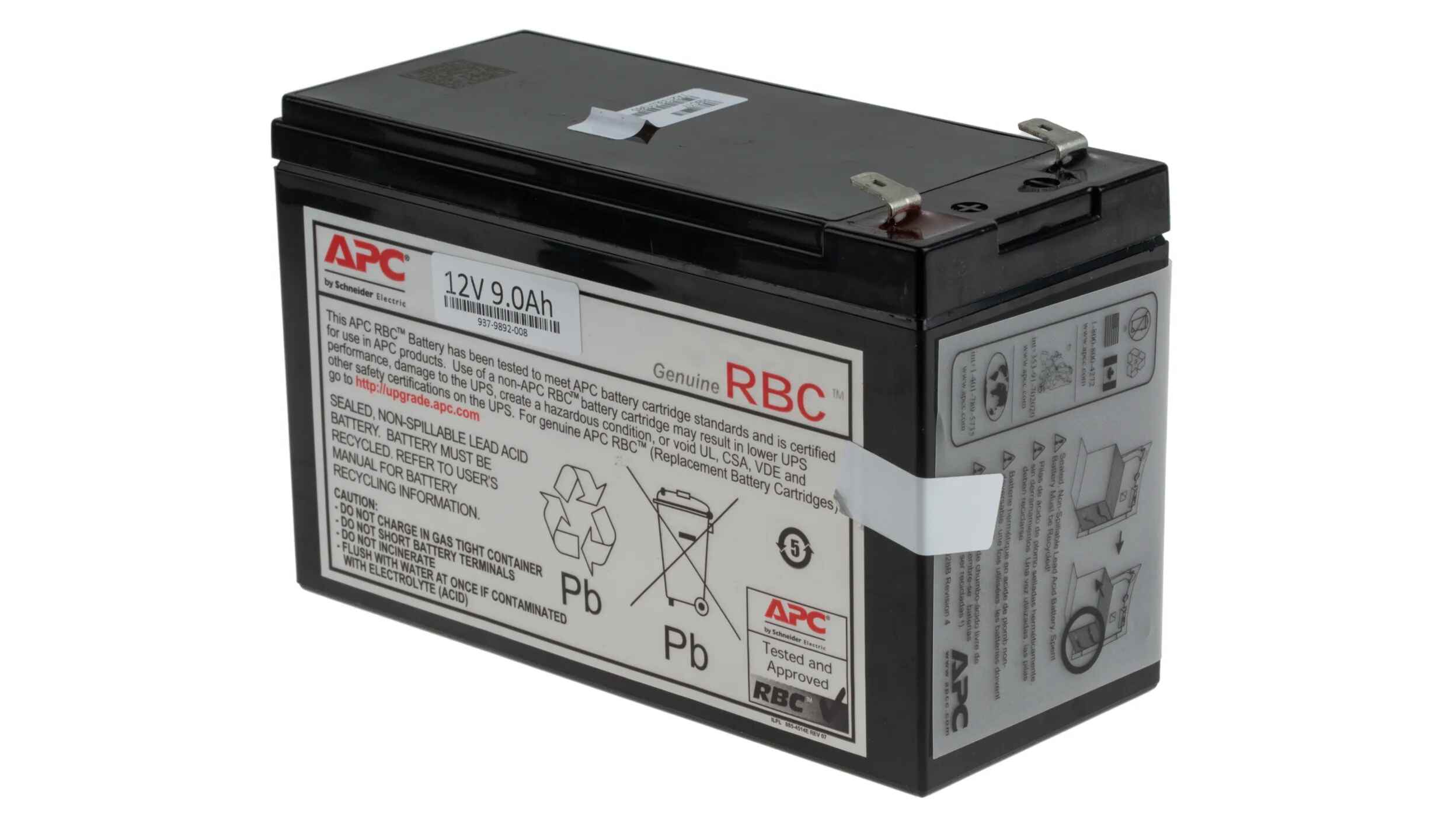Introduction
In the world of technology, uninterrupted power supply is crucial. Whether you are running a business, managing mission-critical systems, or simply relying on electronic devices, having a reliable power backup is essential. This is where UPS, or Uninterruptible Power Supply, comes into play. A UPS ensures that devices stay powered during electrical outages and provides a crucial buffer time for shutting down systems safely.
One integral component of a UPS system is the battery. The battery acts as a power source when the main electrical supply fails. However, like any other battery, UPS batteries can also deteriorate over time, compromising their performance and reliability. It is important to regularly test the UPS battery to ensure it is in optimal condition.
This article will guide you through the importance of testing a UPS battery, the signs of a failing battery, and various methods you can employ to accurately test its functionality. By understanding and implementing these testing methods, you can proactively detect any issues with the UPS battery and take necessary steps to address them before they lead to potential power disruptions.
Why is it important to test a UPS battery?
Why is it important to test a UPS battery?
Testing a UPS battery regularly is crucial for several reasons. First and foremost, it ensures the reliability of your backup power supply. The UPS battery acts as a safeguard against power outages, allowing your devices and systems to continue running smoothly. By testing the battery, you can identify any potential issues or signs of deterioration that could compromise its performance during critical times.
Another reason to test a UPS battery is to extend its lifespan. Batteries have a limited lifespan, and regular testing helps you monitor their health and take preventive measures. It allows you to detect early signs of degradation, such as reduced capacity or increased internal resistance, and intervene before the battery fails completely.
Testing a UPS battery also helps in preventing unexpected downtime. By identifying any issues in advance, you can take corrective actions, such as replacing the battery or implementing maintenance procedures, to avoid sudden failures. This is especially important for businesses that rely heavily on uninterrupted power supply to ensure the continuous operation of their critical systems.
Additionally, testing a UPS battery helps in optimizing its performance. Through various testing methods, you can assess the battery’s capacity, internal resistance, and voltage levels. This information enables you to fine-tune the battery’s charging and discharging parameters, ensuring that it operates at its full potential.
Moreover, testing a UPS battery is essential for safety reasons. Faulty batteries can pose serious risks, including overheating, leakage, and even explosion. Regular testing helps in identifying any hazardous conditions and taking appropriate actions to prevent accidents or injuries.
In summary, testing a UPS battery is important to ensure its reliability, extend its lifespan, prevent downtime, optimize performance, and ensure safety. By implementing regular testing routines and following the appropriate methods, you can maintain a reliable and effective backup power supply, giving you peace of mind during power outages or disruptions.
Signs of a failing UPS battery
A failing UPS battery can lead to serious consequences, such as unexpected power disruptions and potential damage to your devices or systems. It is important to be aware of the common signs that indicate a battery is deteriorating. By recognizing these signs early on, you can take prompt action to address the issue. Here are some key indicators of a failing UPS battery:
1. Reduced backup time: If you notice a significant decrease in the backup time provided by your UPS, it could be a sign of a deteriorating battery. Over time, the capacity of the battery may diminish, resulting in a shorter runtime during power outages.
2. Frequent battery replacement: If you find yourself frequently replacing UPS batteries, it may suggest an underlying issue. Batteries that fail prematurely may indicate problems with the charging system, environmental factors, or improper maintenance.
3. Audible alarms or notifications: Most UPS systems are equipped with alarms or notifications to alert you of potential battery issues. If you hear constant beeping or receive warning messages regarding the battery, it is crucial to investigate and address the problem.
4. Swollen or bulging battery: Physical changes in the battery, such as swelling or bulging, indicate internal damage or chemical reactions. These visual signs should not be ignored, as they can lead to more severe issues like leakage or even explosion.
5. Battery age: UPS batteries have a limited lifespan, typically ranging from three to five years. If your battery has exceeded its expected lifespan, it is prudent to monitor it closely for any signs of deterioration.
6. Inconsistent performance: A failing UPS battery may exhibit inconsistent behavior, such as intermittent power supply or sudden shut-offs during normal operation. These performance issues can be indicative of underlying battery problems.
7. Increased internal resistance: As a battery degrades, its internal resistance tends to rise. The increased resistance can result in decreased efficiency, reduced capacity, and slower charging/discharging rates.
8. Visible corrosion or leakage: Corrosion or leakage around the battery terminals is a clear sign of battery damage. These issues can lead to poor electrical connections, reduced performance, and potential hazards.
Remember that these signs may vary depending on the type and model of your UPS system. If you notice any of these signs or suspect a failing battery, it is crucial to test and evaluate the battery’s condition using appropriate methods, as discussed further in this article.
Methods for testing a UPS battery
Testing a UPS battery is important to ensure its reliability and performance. There are several methods available to accurately assess the condition of a UPS battery. Let’s explore some common methods for testing a UPS battery:
1. Visual inspection: Start by visually inspecting the battery for any signs of physical damage or corrosion. Look for swelling, leakage, or bulging of the battery casing. Check the battery terminals for signs of corrosion or loose connections. Visual inspection can provide valuable initial insights into the battery’s health.
2. Load testing: Load testing involves simulating a power outage and monitoring how well the battery performs under this simulated load. It helps evaluate the battery’s capacity to deliver power during an outage. This method requires specialized load testing equipment and should be performed by trained professionals.
3. Battery capacity test: This test measures the actual capacity of the battery in comparison to its rated capacity. It involves discharging the battery to a specified level and measuring the time it takes to reach that level. This test helps identify any significant capacity loss or deterioration in the battery.
4. Internal resistance test: Internal resistance testing measures the resistance within the battery’s cells. High internal resistance indicates battery deterioration and reduced performance. This test can be conducted using specialized equipment, such as a battery impedance tester.
5. Voltage test: Voltage testing is a simple and quick method to assess the battery’s voltage levels. It involves using a multimeter to measure the voltage across the battery terminals. Comparing the measured voltage to the manufacturer’s specifications can help determine the battery’s health.
6. Battery runtime test: This test involves running the UPS system on battery power and measuring the time it takes for the battery to deplete. It provides an estimation of how long the battery can sustain the load during an actual power outage.
It is important to note that not all testing methods may be suitable for every type of UPS battery. It is recommended to refer to the manufacturer’s guidelines or consult with an expert to determine which testing methods are most appropriate for your specific UPS battery.
By regularly conducting these tests, you can ensure that your UPS battery is functioning optimally and address any potential issues before they result in unexpected power disruptions or damage to your devices.
Method 1: Visual inspection
Visual inspection is an important initial step in testing a UPS battery. It allows you to assess the battery’s physical condition and identify any visible signs of damage or deterioration. Here’s how you can perform a visual inspection:
1. Check for physical damage: Carefully examine the battery casing for any signs of cracks, dents, or swelling. These can indicate internal damage or leakage. A swollen or bulging battery should be replaced immediately as it poses a significant risk.
2. Examine the battery terminals: Inspect the battery terminals for signs of corrosion or buildup. Corrosion can hinder proper electrical connections and cause poor performance. If you notice any corrosion, clean the terminals using a battery terminal cleaner or a mixture of baking soda and water. Ensure that the terminals are securely connected.
3. Look for leakage: Check for any fluid leakage around the battery. Leakage can indicate internal cell damage and should not be ignored. If you detect any leakage, consult a professional for further guidance on how to handle the situation.
4. Verify the manufacturing date: Look for the manufacturing date on the battery. UPS batteries typically have a limited lifespan of 3 to 5 years. If the battery has exceeded its expected lifespan, it may be prone to deterioration and should be closely monitored.
5. Evaluate the battery’s overall condition: Consider the environment in which the battery is stored. Extreme temperatures, excessive humidity, and exposure to direct sunlight can accelerate battery degradation. Assess the general cleanliness and upkeep of the battery.
Visual inspection is a relatively simple yet crucial method for assessing the condition of a UPS battery. Regular inspections can help you detect any potential issues early on and take necessary actions to prevent further damage or failures.
However, it is important to note that visual inspection alone may not provide a comprehensive understanding of the battery’s health. It is recommended to combine visual inspection with other testing methods, such as load testing or battery capacity testing, for a more complete assessment of the battery’s performance.
Method 2: Load testing
Load testing is a method used to evaluate the performance of a UPS battery under a simulated load. This test helps determine the battery’s ability to deliver power during an actual power outage. Load testing is typically conducted using specialized equipment and should be performed by trained professionals. Here’s an overview of how load testing is carried out:
1. Preparation: Before conducting a load test, ensure that the battery is fully charged. It is important to note that load testing should only be performed on batteries that are in good physical condition and have been properly maintained.
2. Simulating a power outage: During load testing, the UPS system is disconnected from the main power supply and switches to battery power. This simulates a real-life power outage scenario.
3. Applying the load: Once the UPS system is on battery power, a load is applied to the system. The load should be representative of the typical power consumption of the devices or systems that the UPS is intended to support. The load can be in the form of resistive, capacitive, or inductive loads, depending on the specific requirements.
4. Monitoring the battery’s performance: The performance of the battery is monitored throughout the duration of the load test. This includes observing the battery voltage, runtime, and any fluctuations or abnormalities.
5. Assessing the results: After the load test is complete, the data collected is analyzed to evaluate the battery’s performance. The runtime achieved during the test is compared to the expected runtime. Any significant discrepancies may indicate a potential issue with the battery.
Load testing provides valuable insights into the battery’s response to an actual power outage situation. It helps identify any weaknesses or limitations in the battery’s performance and can highlight the need for maintenance or replacement. Regular load testing is especially important for critical systems that require a reliable backup power supply.
It is important to note that load testing should be performed safely and in accordance with industry standards. It is recommended to engage professionals who are experienced in conducting load tests and have the necessary equipment and expertise.
While load testing provides valuable information about a UPS battery’s performance, it should be combined with other testing methods, such as visual inspection and capacity testing, for a comprehensive assessment of the battery’s health.
Method 3: Battery capacity test
Battery capacity testing is a method used to measure the actual capacity of a UPS battery in comparison to its rated capacity. It helps assess the battery’s ability to hold and deliver power during a power outage. Conducting regular battery capacity tests is essential for ensuring the reliability of a UPS system. Here’s an overview of how battery capacity testing is performed:
1. Preparation: Ensure that the battery is fully charged before conducting the capacity test. It is recommended to perform this test on batteries that are in good physical condition and have been properly maintained.
2. Discharge the battery: The battery is discharged to a specific level, typically a percentage of its rated capacity. This can be done by connecting the battery to a load or by activating the discharge feature on the UPS system itself. During the discharge process, monitor the battery voltage and runtime.
3. Measure the discharge time: Measure the time it takes for the battery to reach the specified discharge level. This provides an indication of the battery’s capacity.
4. Compare the results: Compare the measured discharge time to the expected runtime of the battery. If the measured discharge time falls significantly short of the expected runtime, it may indicate a capacity loss or degradation in the battery.
5. Analyze the results: Analyze the data collected during the capacity test to evaluate the overall health of the battery. If there is a significant capacity loss, further investigation or maintenance may be required.
Battery capacity testing helps identify any potential capacity loss or deterioration in a UPS battery. It provides valuable information about the battery’s ability to deliver power for a specified period of time. By regularly conducting capacity tests, you can detect any significant capacity loss early on and take appropriate actions, such as replacing the battery, to ensure the UPS system’s reliability.
It is important to note that battery capacity testing should be performed safely and accurately. Follow industry guidelines, manufacturer recommendations, and consider consulting with professionals experienced in battery testing.
Please note that battery capacity testing alone may not provide a complete understanding of the battery’s health. It is recommended to combine this method with other testing techniques, such as visual inspection and load testing, for a comprehensive assessment of the battery’s performance.
Method 4: Internal resistance test
The internal resistance test is a method used to measure the resistance within the cells of a UPS battery. It provides insights into the overall condition and health of the battery. High internal resistance can indicate battery deterioration and reduced performance. Conducting regular internal resistance tests helps identify potential issues before they lead to system failures. Here’s an overview of how the internal resistance test is performed:
1. Preparation: Ensure that the battery is fully charged before conducting the internal resistance test. Disconnect the battery from the UPS system and allow it to rest for a few hours to stabilize.
2. Equipment setup: Use a specialized battery impedance tester or a digital multimeter with an internal resistance feature. Set the instrument to the appropriate resistance measuring range.
3. Measure the resistance: Connect the testing leads to the battery terminals, observing the correct polarity. Measure and record the resistance value displayed on the instrument.
4. Compare the results: Compare the measured resistance value to the manufacturer’s specifications or industry standards. If the measured resistance is significantly higher than expected, it may indicate battery deterioration or an underlying issue.
5. Analyze the results: Analyze the data collected during the internal resistance test to evaluate the battery’s condition. High internal resistance can result in decreased efficiency, reduced capacity, and slower charging/discharging rates.
Internal resistance testing provides valuable information about the battery’s internal condition. It can help detect early signs of degradation or potential failures before they occur. By regularly performing internal resistance tests, you can proactively identify battery issues and take appropriate measures, such as maintenance or replacement, to ensure the UPS system’s reliability.
It is important to note that internal resistance testing should be performed accurately and in accordance with industry guidelines. Consider consulting with professionals who are experienced in battery testing or refer to the manufacturer’s recommendations.
Please note that internal resistance testing should not be the only method used to assess the battery’s health. It is recommended to combine this testing method with others, such as visual inspection, load testing, and capacity testing, for a comprehensive evaluation of the battery’s performance and condition.
Method 5: Voltage test
The voltage test is a simple and quick method to assess the health of a UPS battery. By measuring the voltage across the battery terminals, you can gain insights into its overall condition and performance. Although it is not a comprehensive test on its own, regular voltage testing can help monitor the battery’s stability. Here’s an overview of how the voltage test is performed:
1. Preparation: Ensure that the battery is fully charged before conducting the voltage test. Disconnect the battery from the UPS system and allow it to rest for a few hours to stabilize.
2. Equipment setup: Use a digital multimeter or a voltmeter with an appropriate voltage range. Set the instrument to the DC voltage setting.
3. Measure the voltage: Connect the testing leads to the battery terminals, ensuring correct polarity. Measure and record the voltage displayed on the instrument.
4. Compare the results: Compare the measured voltage to the manufacturer’s specifications or industry standards. If the measured voltage significantly deviates from the expected value, it may indicate a potential issue with the battery.
5. Analyze the results: Analyze the voltage data collected during the test to evaluate the battery’s condition. Monitoring the voltage over time can help identify trends or fluctuations that may indicate deterioration or instability.
Voltage testing provides a quick assessment of the battery’s condition, but it is important to note that it is not the only method to rely on for a comprehensive evaluation. Other factors, such as load and temperature, can affect the battery’s performance, and voltage alone may not give a complete picture.
Regular voltage testing, when combined with other testing methods, such as visual inspection, load testing, capacity testing, or internal resistance testing, allows for a more thorough assessment of the battery’s health. By integrating these methods, you can gain a comprehensive understanding of the UPS battery’s condition and take appropriate actions to ensure its reliability and performance.
It is recommended to follow industry guidelines, manufacturer recommendations, and consult with professionals experienced in battery testing to ensure accurate and safe voltage testing procedures.
Method 6: Battery runtime test
The battery runtime test is a method used to determine how long a UPS battery can sustain a specific load during a power outage. By measuring the actual runtime, you can assess the battery’s capacity and performance under realistic conditions. Conducting regular battery runtime tests helps ensure the reliability of the UPS system. Here’s an overview of how the battery runtime test is performed:
1. Preparation: Fully charge the battery before conducting the runtime test. Disconnect the UPS system from the main power supply to simulate a power outage.
2. Apply the load: Connect the load to the UPS system to simulate the power consumption of devices or systems that the UPS is intended to support. Ensure that the load is representative of typical usage during a power outage.
3. Start the test: Turn on the UPS system and monitor the battery runtime. Measure the time it takes for the battery to deplete and the UPS system to shut down.
4. Evaluate the results: Compare the measured runtime to the expected runtime based on the battery’s rated capacity and the load applied. If the measured runtime significantly deviates from the expected value, it may indicate a capacity loss or degradation in the battery.
5. Analyze the results: Analyze the data collected during the runtime test to assess the battery’s performance and capacity. Monitoring the runtime over time can help identify any gradual decline or sudden changes that may signal issues with the battery.
Battery runtime testing provides valuable information about the battery’s ability to sustain a load during a power outage. By regularly conducting runtime tests, you can identify any significant capacity loss or deterioration in the battery and take appropriate actions, such as maintenance or replacement, to ensure the UPS system’s reliability.
It is important to note that runtime tests should be conducted safely and accurately. Follow industry guidelines, manufacturer recommendations, and consider consulting with professionals experienced in battery testing.
Please bear in mind that battery runtime testing should not be the sole method used to assess the battery’s health. Combine this testing method with others, such as visual inspection, load testing, capacity testing, and internal resistance testing, for a comprehensive evaluation of the battery’s performance and condition.
Common mistakes to avoid when testing a UPS battery
When testing a UPS battery, it is important to be aware of common mistakes that can affect the accuracy and reliability of the test results. By avoiding these mistakes, you can ensure a more thorough and effective evaluation of the battery’s condition. Here are some common mistakes to avoid when testing a UPS battery:
1. Not following proper safety precautions: Always prioritize safety when testing a battery. Wear appropriate personal protective equipment, such as gloves and safety goggles, and handle the battery with care. Battery acid is corrosive and can cause harm if mishandled.
2. Neglecting regular testing: Regular testing is crucial to catch any potential issues with the UPS battery early on. Neglecting to test the battery regularly can lead to unexpected failures or power disruptions. Establish a testing schedule and stick to it to ensure the ongoing reliability of the battery.
3. Not considering environmental factors: Environmental factors, such as temperature and humidity, can impact battery performance and lifespan. Avoid testing the battery in extreme conditions, as it may affect the accuracy of the test results. Ensure that the testing environment reflects the typical operating conditions of the battery.
4. Relying solely on one testing method: Utilize a combination of testing methods to get a comprehensive assessment of the battery’s health. Each testing method has its limitations, and using multiple methods will provide a more accurate and reliable evaluation.
5. Skipping visual inspection: Visual inspection is a vital initial step in evaluating a UPS battery’s condition. Skipping this step can lead to missing obvious signs of damage, leakage, or corrosion that may impact battery performance. Always perform a visual inspection before proceeding with other testing methods.
6. Incorrect load testing setup: Load testing should be performed using equipment and loads that accurately represent the battery’s typical usage. Incorrect load settings or inadequate equipment can lead to inaccurate test results. Follow the manufacturer’s guidelines and consult with experts to ensure proper load testing setup.
7. Failing to record and analyze test results: It is essential to record all test results and properly analyze them. Keeping a record allows for tracking the battery’s performance over time and identifying any patterns or trends. Analyzing the results can help in making informed decisions about battery maintenance or replacement.
By avoiding these common mistakes, you can ensure more accurate and reliable UPS battery testing results. Regular and thorough testing, combined with proper safety precautions, will help maintain the reliability and performance of your UPS system.
Conclusion
Testing a UPS battery is a crucial aspect of ensuring the reliability and performance of a UPS system. By regularly testing the battery using appropriate methods, you can identify any potential issues or deterioration and take proactive measures to address them before they result in unexpected power disruptions or equipment damage.
In this article, we discussed the importance of testing a UPS battery and the various signs that indicate a failing battery. We explored several methods for testing a UPS battery, including visual inspection, load testing, battery capacity testing, internal resistance testing, voltage testing, and battery runtime testing. Each method provides valuable insights into the condition and performance of the battery.
It is important to note that no single testing method can provide a complete evaluation of a UPS battery’s health. Therefore, it is recommended to combine multiple testing methods to obtain a comprehensive understanding of the battery’s condition. Visual inspection should always be the starting point, followed by other methods depending on the specific requirements and capabilities.
Additionally, we discussed common mistakes to avoid when testing a UPS battery. These mistakes include neglecting regular testing, not considering environmental factors, relying solely on one testing method, skipping visual inspection, incorrect load testing setup, and failing to record and analyze test results. By being aware of these mistakes and taking necessary precautions, you can ensure more accurate and reliable testing outcomes.
Maintaining a healthy UPS battery is essential for uninterrupted power supply, especially in critical systems and during power outages. By incorporating regular battery testing into your maintenance routine, you can ensure the ongoing reliability and performance of your UPS system, minimizing the risk of unexpected power disruptions and protecting your devices and systems.
Remember to consult the manufacturer’s guidelines, follow industry best practices, and engage professionals experienced in UPS battery testing if needed. With proper testing and maintenance, you can have peace of mind knowing that your UPS battery is in optimal condition to support your power backup needs.

























